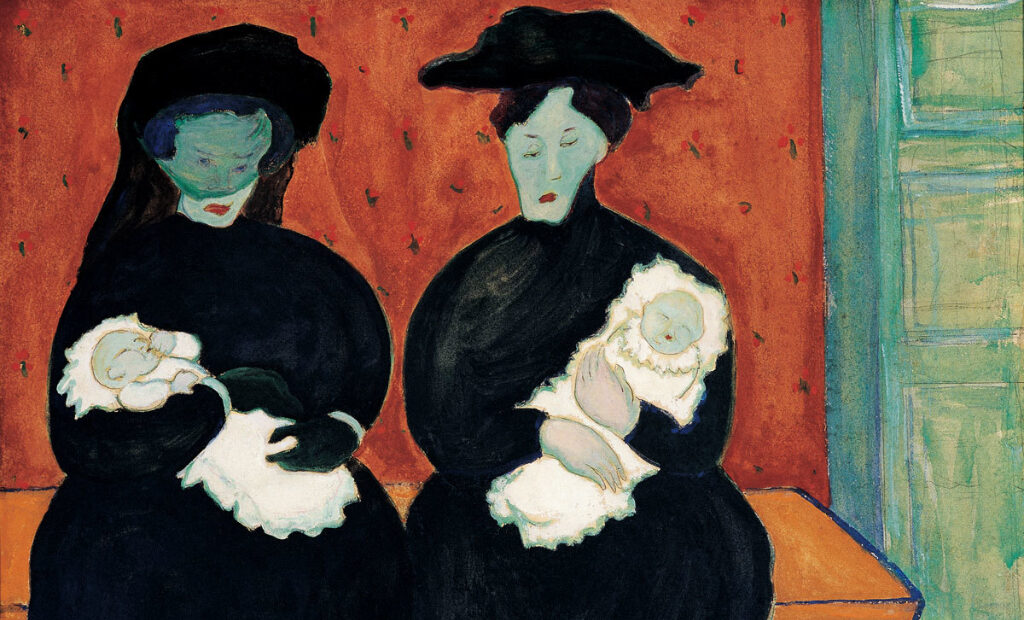Making Modernism at the Royal Academy

Making Modernism is the first major UK exhibition of works by women working in Germany in the early 1900s: Paula Modersohn-Becker, Kӓthe Kollwitz, Gabriele Münter and Marianne Werefkin. There are also supplementary works by Erma Bossi, Ottilie Reylaender and Jacoba van Heemskerck. Over three rooms, 65 works, most of which have never been displayed in the UK before, are brought together by curator Dorothy Price. The work covers many of the preoccupations of the nascent modern art movement: sexuality, spirituality, colour, maternity, mortality.
Paula Modersohn-Becker’s Self-portrait as a Standing Nude with Hat (1906) is the first nude self-portrait by a known female artist. The hat on her head places her in her own time, while the nudity is, necessarily, timeless. Fashion changes but bodies don’t, despite what some may have us believe. In contrast to supine male-painted nudes, this one is standing. The face is blank but looks towards the viewer, the soft body rendered in a strident pink. The artist/subject holds two oranges, mysteriously, the colour of which is echoed in the casually confrontational pubic triangle. Modersohn-Becker died in 1907 of an embolism following childbirth aged just 31.
Some of the works draw uncomfortable associations between maternity and mortality. Twins (1909) by Werefkin makes new mothers look like they are in mourning: black clothes, one with a veil over her face, and babies and mothers with a similar sickly pallor. It’s fair to say that the mothers don’t look especially thrilled. Werefkin was a Russian baroness who wrote, mystifyingly to modern minds perhaps, “I am a woman, I lack every ability to create.” She met artist Alexei Jawlensky and together they travelled west, Werefkin giving up her painting for a decade to support Jawlensky financially and emotionally. Accompanying them was her young maid, who soon gave birth to Jawlensky’s son. That might explain some of the ambivalence towards motherhood here. As a thanks for all her support to the detriment of her own ambition and work, Jawensky eventually left Werefkin for that maid.
Most visceral and accomplished is the work of Kӓthe Kollwitz. The etching Woman with Dead Child (1903) is unbearable. The realism with which the bodies are rendered makes the scene of the woman cradling a dead child all the more powerful. The grief is violent, animalistic. It is an image not soon forgotten.
While Kollwitz is relatively known, the other artists here are not. Two of the artists (Werefkin and Münter) were the partners and patrons of better-known male artists and all would have faced many obstacles to gaining education and opportunities. The intense bluntness of much of the work is long overdue some recognition.
Jessica Wall
Making Modernism is at the Royal Academy from 12th November 2022 until 12th February 2023. For further information visit the exhibition’s website here.
























Facebook
Twitter
Instagram
YouTube
RSS